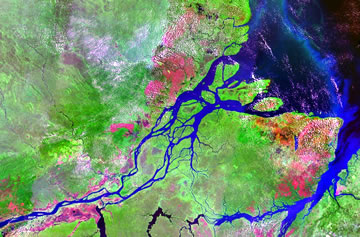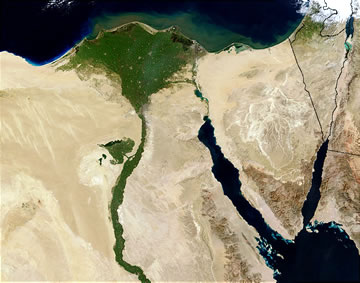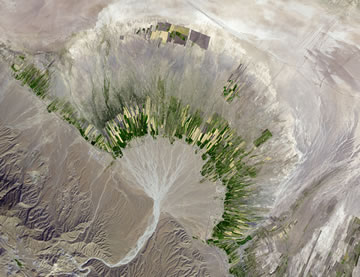The smallest streams and the largest rivers come from precipitation - rain, snow, hail, or sleet. Whenever there is precipitation over land, some of the water that falls on the ground soaks into the soil, but the rest of it stays on the surface, where gravity carries it downslope. The water that stays on top of the soil is known as runoff. The more impermeable the surface, the more runoff there is compared to the amount of water that soaks into the ground. The proportion of precipitation that becomes runoff is particularly high in urban areas with large amounts of concrete.

Runoff begins as broad, thin sheets. These sheets may erode the surface, creating tiny channels known as rills. When rills come together, they form gullies. When gullies join, the water in them combines to form a stream. Conventionally, very small streams are known as brooks or creeks, while very large streams are called rivers. A river can have many streams or other rivers, known as tributaries, flowing into it.
A river system includes a river, all of its tributaries and its drainage basin - the area of land where all the water in the river and its tributaries comes from. The Amazon River has the largest drainage basin in the world.
When two rivers systems are near each other, they are separated by a divide. This can range from a small ridge that separates two gullies or a continental divide, which divides a continent into two huge drainage basins.

River Landscapes
Rivers play an important role in shaping the landscape. As a river erodes the surrounding land, valleys, gorges and canyons form.
The sediment that a river carries can also change the landscape.
Bedrock near the river's headwaters is broken down by weathering and then transported downslope by mass wasting and erosion. The river carries the sediment until it is deposited at the mouth. Over time, deposits of sediment accumulate.
A delta forms where a slow-moving river that is full of sediment enters a lake, inland sea or ocean. As sediment accumulates, it blocks the channel where the river was flowing. This causes the river to seek another way out, so the main channel breaks up into smaller ones. As more and more smaller channels develop, a triangular shape forms. This shape resembles the Greek letter delta (Δ).
The largest delta in the world is the Ganges delta in India and Bangladesh. It is located where the Padma, Jamuna and Meghna rivers flow into the Bay of Bengal.
Sometimes swift ocean currents carry sediment far away, so no delta forms.

An alluvial fan is created when a fast-moving stream or river in a narrow mountain valley suddenly reaches a broad, flat region. When the river suddenly slows down, it drops all of its sediment, which forms a distinctive fan shape. Deserts often have alluvial fans. They form when flash floods create rapid streams on hillsides.
When many alluvial fans come together, they form a bajada.
Natural levees are long ridges of sediment that run parallel to a river's banks. They are formed by the accumulation of sediment that is deposited during successive floods in a broad river valley.